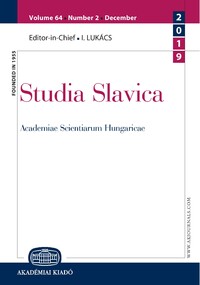Kajkavsko narječje – jučer, danas i sutra
Kajkavian Dialect – Yesterday, Today, and Tomorrow
Author(s): Đuro BlažekaSubject(s): Phonetics / Phonology, Morphology, Syntax
Published by: Akadémiai Kiadó
Keywords: the Croatian language; Kajkavian dialect; genesis; division; phonology; morphology; syntax; ver- nacular erosion
Summary/Abstract: The introduction provides basic data on the genesis, distribution, and division of the Kajkavian dialect. It is thought that the closest to the factual situation on the genesis of the Kajkavian dialect is the opinion of Z. Junković, who believed that the Kajkavian dialect belonged to the Pannonian group of the Western South Slavic proto-language, which according to him would still include the dialects of Prlekija, the dialect of Prekmurje as well as some West Styrian dialects. The Ottoman conquests caused large migrations of the population to the north and west, and the population that later replaced it was mainly from the area of the Štokavian dialect. Of the many divisions of the Kajkavian dialect, the one by Mijo Lončarić is usually em- phasized; it divides the Kajkavian dialect into 15 dialects. The following part of the paper continues to present some of the most typical linguistic features of the Kajkavian vernaculars at the phonological, morphological, and syntactic level. Examples of minimal phono- logical pairs between different identical vowels of the o- or e-category in individual Kajkavian vernaculars are given. In some vernaculars, the opposition in quantity was lost because in these vernaculars, in order to compensate for the distinctive features that exist in vernaculars where these contradictions exist, the prosodic suprasegmental features were transformed into segmental ones. The elimination of quantity is an important link between the Kajkavian dialect and the east of the Slavic North as well as the Polish and the Lusatian language. Among the morphological features, the pronunciation of morphological categories with vowel alterna- tions in some dialects stands out. The emphasis is on the preservation of the supine, the loss of the vocative, the absence of the long plural in the A-declension, and the disappearance of the dual. In conclusion, it is said that most descriptions of Kajkavian vernaculars that are still cited in the dialec- tological literature as a synchronic fact will soon become linguistic diachrony because most respondents have signs of the vernacular erosion process cited by C. Hagège. Respondents are largely unaware of these changes and are mostly still convinced that they speak the original Kajkavian rather than an interdialect in which most of the specific characteristic features of their local dialects have been reduced. It is concluded that the Kajkavian dialect will not disappear but the specific features of individual groups and local dialects with permanently preserved “solid parts” will not be preserved.
Journal: Studia Slavica Academiae Scientiarum Hungaricae
- Issue Year: 65/2020
- Issue No: 1
- Page Range: 15-27
- Page Count: 13
- Language: Croatian
- Content File-PDF

